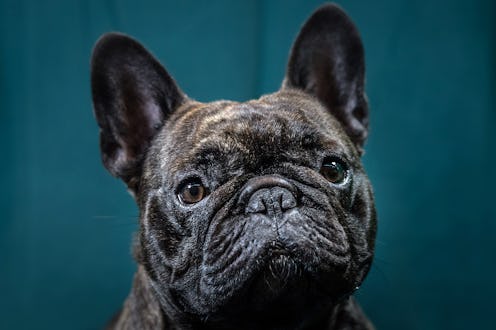Life
7 Dog Breeds That Experience More Health Problems Than Others

Considering getting a dog? It's worth doing your research — not just because you want to check out each dog breed's temperament and suitability for your lifestyle (clingy dogs will not cope well if you travel five days a week and leave them at home), but because of how likely they are to have health problems. Dogs were domesticated around 10,000 years ago and have been a firm part of human civilization ever since, with hundreds of different breeds around — but as trends for various features have come and gone, certain dog breeds have experienced health issues that come from pedigree breeding. The results? Over-bred animals that suffer from genetic health issues from centuries of breeding selection.
Just because a feature on a dog, like a squashed face or wrinkles, looks cute, doesn't mean it's good for the dog's health or wellbeing. Many dog owners will experience that conflict, particularly if they own purebred animals that don't have any mixed traits from other breeds to mitigate these health issues. That sweet snuffly noise from a snub nose may turn out to be a painful and expensive issue.
1French Bulldogs
A new study has shown that French bulldogs are high candidates for health issues including breathing problems, ear infections, and conjunctivitis. At least part of the reason is how they've been bred by centuries of owners. The progressive shortening of their skulls over time, to get a distinctive flat-faced, short-nosed look, has compacted their sinuses, meaning that they're more likely to encounter problems with their breathing. And the preference for folds on the face, while it looks cute, also means that bacteria gathers in the folds and causes skin infections. Not so cute.
2German Shepherds
The owners of the German Shepherd that won the famous Cruft's dog show in 2016 found themselves embroiled in controversy because of the dog's spine. For generations, German Shepherds in dog shows had been rewarded for having "sloped" spines, which meant their bodies drooped at the back, causing serious leg and hip issues. Virtually all Shepherds with this trait eventually end up unable to walk. Nowadays, according to experts, breeding and dog shows are going in the other direction, and attempting to give Shepherds straight backs again, but you'll also encounter pedigrees with slopes being shown as a point of pride.
3Shar-Peis
Shar-Peis are beautiful dogs, but intensive breeding to give them heavily folded skin has also produced a lot of health issues. Many Shar-Peis have both skin issues from bacteria in the folds and eye issues; one survey found that 35 percent of the breed suffers from entropion, or rolled-in eyelids, which require surgery to correct. Small ear canals mean ear infections are common, and Shar-Peis are also prone to an autoimmune condition known as "Shar-Pei fever" that causes inflammation of the joints.
4Pugs
Pugs are struck with the same health problems that affect Frenchies, in that they often experience breathing and skin problems because of foreshortened muzzles. "Retromop" pugs are now coming back into fashion with longer muzzles, giving them a much less flat-faced look and prompting healthier breathing. However, pugs are also prone to another condition that may be due to overbreeding or other issues: pug dog encephalitis, a brain infection which exclusively occurs in pugs and is fatal in 1.2 percent of the breed. It's thought to be hereditary and is a serious concern for any dog that has it.
5Cavalier King Charles Spaniels
Beloved family pets with dainty features, Cavalier King Charles Spaniels also come with a host of genetic issues that have been passed down hereditary lines, including mitral valve disease, a heart condition which is fatal to 50 percent of afflicted spaniels. They're also prone to a condition called syringohydromyelia, where fluid pockets push into the spinal cord because the brain is too big for the dog's tiny skull. 70 percent of all King Charles spaniels get this problem, according to the Universities Federation For Animal Welfare, and it can be agonizing.
6Traditional Bulldogs
The cheerful-looking bulldog was once very different-looking, but over the past two centuries has been bred to be squat with a huge head and a flat face. This means that it has breathing issues, because again, its face is flat, but also its head and hips don't support natural insemination and birth. Female bulldogs can rarely bear the weight of a male, so artificial insemination is common, and the heads of pups are so big that many have to be born via Caesarian section. Without human aid, breeding them would be near-impossible.
7Basset Hounds
They look like a callback to a bygone age, but basset hounds are actually very modern in their look; they were once taller, with shorter ears and less-droopy faces. As we've selected for those traits, however, the breed has become more prone to health problems. Its drooping eyes have meant it's more likely to develop issues like "cherry eye" and eye inflammation, while the long ears also show a strong tendency to get ear infections. That's added to the hip dysplasia and other joint disorders, because the hound is carrying a lot of weight on shortened legs.
If you're seriously considering owning a dog, look beyond the fancy "pedigree" label and understand just what a purebred dog is and what health risks come with its status. Often, according to a study of nearly 28,000 dogs, the healthiest dogs are mixed breeds who have the strongest characteristics of several breeds at once. Always check out a breeder's reputation, get every health check available for a purebred dog, and remember: shelter mutts can be healthy, loyal companions with years of energy and life.